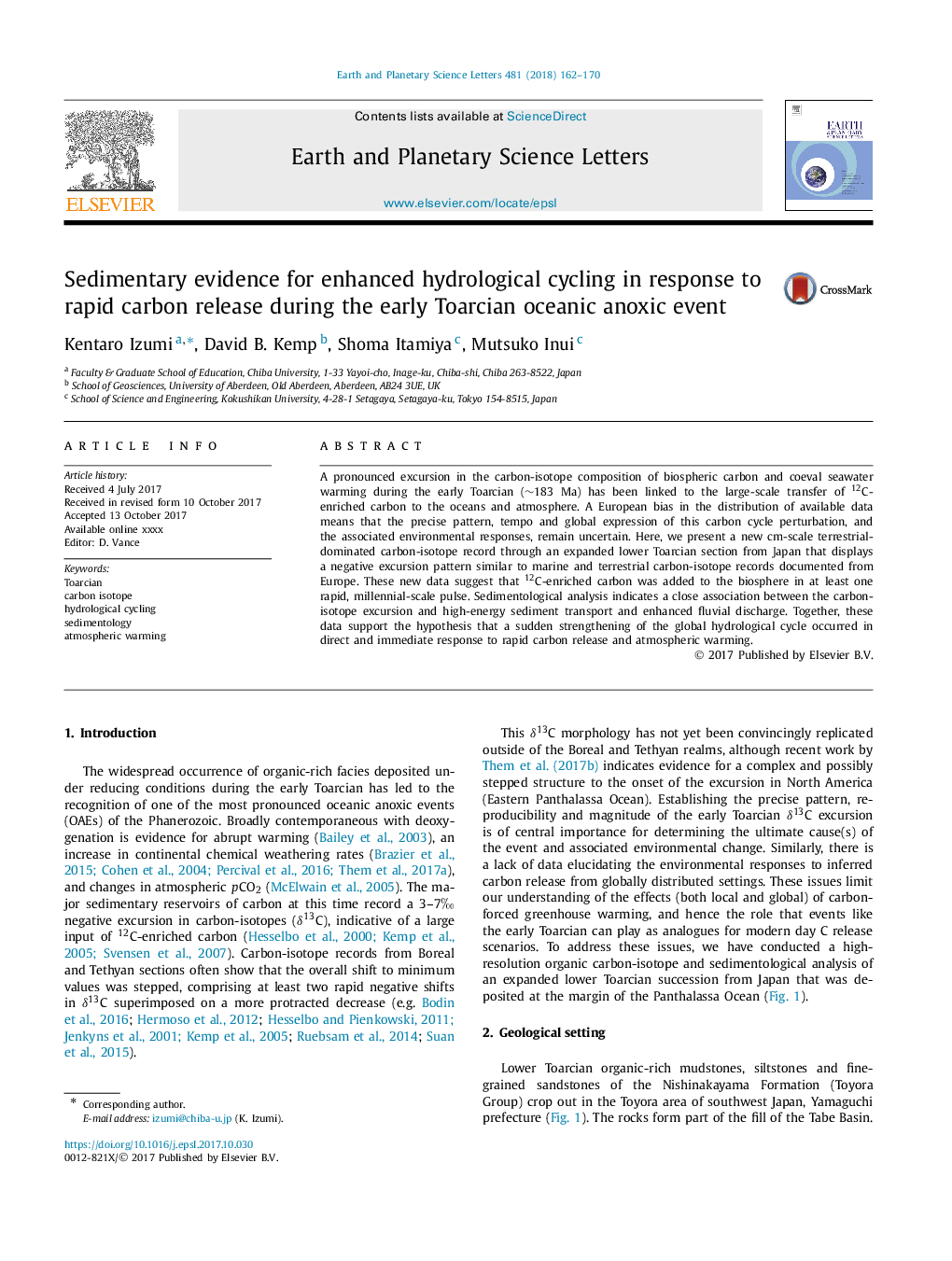| Article ID | Journal | Published Year | Pages | File Type |
|---|---|---|---|---|
| 8907336 | Earth and Planetary Science Letters | 2018 | 9 Pages |
Abstract
A pronounced excursion in the carbon-isotope composition of biospheric carbon and coeval seawater warming during the early Toarcian (â¼183 Ma) has been linked to the large-scale transfer of 12C-enriched carbon to the oceans and atmosphere. A European bias in the distribution of available data means that the precise pattern, tempo and global expression of this carbon cycle perturbation, and the associated environmental responses, remain uncertain. Here, we present a new cm-scale terrestrial-dominated carbon-isotope record through an expanded lower Toarcian section from Japan that displays a negative excursion pattern similar to marine and terrestrial carbon-isotope records documented from Europe. These new data suggest that 12C-enriched carbon was added to the biosphere in at least one rapid, millennial-scale pulse. Sedimentological analysis indicates a close association between the carbon-isotope excursion and high-energy sediment transport and enhanced fluvial discharge. Together, these data support the hypothesis that a sudden strengthening of the global hydrological cycle occurred in direct and immediate response to rapid carbon release and atmospheric warming.
Related Topics
Physical Sciences and Engineering
Earth and Planetary Sciences
Earth and Planetary Sciences (General)
Authors
Kentaro Izumi, David B. Kemp, Shoma Itamiya, Mutsuko Inui,
